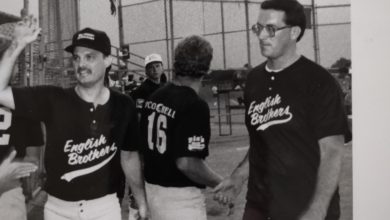Commentary: The role of news media is to inform, not promote

By FRED KRONER
fred@mahometnews.com
The message and the messenger often get confused.
And blurred.
And misunderstood.
One of the tenants of good journalism is to be impartial. Plus, present both sides of an issue. Plus, be factually accurate.
It can be understandable that the message gets mixed. There are exceptions, just not to the accuracy part.
For example, SuperStore X decides to build a massive structure in the community and announces it will hire hundreds of workers.
The story is reported by the local newspaper. Details such as why the location was favorable are mentioned as well as the potential impact on the community.
Because this is a big deal, it gets displayed prominently on the front page, with a big headline, packaged around a series of photographs showing the location and perhaps an artist’s rendering of what the building will look like upon completion.
To a number of this publication’s readers, the reaction will be along the lines of, “Oh, look. The newspaper is really promoting this new store.”
It may appear that way, but what is actually going on are diligent writers, editors and photographers staying on top of a breaking issue that could eventually have a profound effect on the community.
Now, let’s look at another topic.
The local high school hires a new coach. He will be in charge of two programs and will serve as athletic director.
The local publication details the hiring in a front-page sports story and reaches out to former colleagues and athletes at the person’s previous school.
Some of those individuals brought up points of alleged indiscretions and repeated cases of verbal abuse with assistant coaches.
The reporter produces two articles. The first is a news story, providing details of the hiring.
The following day, he authors a column talking about some of the red flags that surrounded the hiring.
The reporter is roundly criticized by non-media members for “trying to paint the school in a negative light.”
Some don’t understand why the reporter questions the choice and “isn’t supportive.”
The truth is that when writing columns, reporters are permitted to state opinions and “take sides,” either in support or in disagreement.
And yet, many folks consider columns and articles as synonyms just like when a person uses “six” or “a half-dozen” interchangeably.
For decades, people have told me they enjoyed a particular column I wrote about the previous night’s ball game. Those stories were never columns, however, but straight-forward news stories.
Especially when the layout presented the article in a one-column newspaper format, it can be difficult for people to see the distinction.
Columns are somehow marked, either as opinions or commentary, and generally include a small photograph of the writer.
***
While it can be understandable when individuals outside of the media have mistaken perceptions concerning the role of journalists, it is a different story when those involved with reporters on a day-to-day basis act as if they can control the message that is sent out to the masses.
Bradley University, in Peoria, made the national news last week, not so much for its men’s basketball team securing a berth in the NCAA Tournament, but more so for the school’s conduct at a Friday afternoon press conference.
School personnel banned a sportswriter from the Peoria Journal Star from interviewing coaches and athletes.
The writer who was denied access was Dave Reynolds, who has been the beat writer for Bradley men’s basketball for 29 years.
His indiscretion?
He was told, “You don’t promote the Bradley brand.”
To those of us in the profession, that means one thing: He was doing his job.
He was not hired by the newspaper to be a cheerleader or a public relations director.
This isn’t the kind of story which will come and go quickly, not in the age of social media consciousness.
The Washington Post published a reaction.
The Sarasota (Fla.) Herald-Tribune ran a story.
There was a hashtag on twitter #freeDaveReynolds.
The person for whom Bradley’s School of Sports Communication is named, Los Angeles Dodgers radio voice Charley Steiner, weighed in.
The United States Basketball Writers Association, in conjunction with the Associated Press Sports Editors, issued a statement.
None of the feedback was positive for the original decision made by head coach Brain Wardle and the Bradley sports media relations department.
A day later, university officials backtracked and apologized to Reynolds and restored his access.
Both Wardle and Bradley’s athletic director Chris Reynolds issued apologies, both in private and public settings.
It is still news nearly a week later, however, because of the bigger-picture implications: An individual or a group of individuals trying to control what is printed or said.
Just because a message is not what someone wanted to see or hear doesn’t mean you silence the messenger.
This is a difficult time to be a journalist.
Chants of “fake news” abound.
More and more persons without any training are creating blogs and posting online stories.
It can be difficult to separate the professionals from the wanna-bes.
It should also be clear that those who have earned their credentials, who have spent decades gathering news, sifting through the stories and background, should not have their access limited simply because someone doesn’t agree with the views presented.
A journalist not only has the right, but also the obligation to dig beyond the surface for a story and print the findings, good, bad or indifferent.
Truth must triumph. There can be no other way for the story to end.




